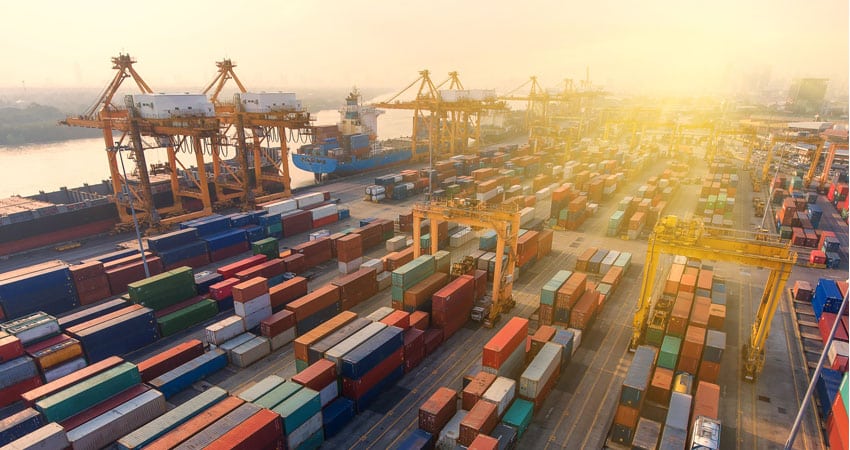Import volume, measured in container TEUs, was up 6.9% from February to March, according to data from Descartes. Last month’s volume was down 27.5% from the prior year but ahead of pre-pandemic 2019 by 4.2%, an encouraging sign even as the 2023 outlook remains cloudy due to ongoing labor and economic issues.
The month-to-month increase was 22.9% and 10.6%, respectively, in 2021 and 2022, as volumes surged along with ecommerce demand and clogged supply chains couldn’t handle the traffic. Overall import volume in March was 1.8 million TEUs, compared to 1.7 million in February, according to Descartes’s global shipping report.
More than 1 million TEUs were diverted from West coast ports in both 2021 and 2022, Descartes reported, with most of that volume going to Gulf coast ports as shippers worked to avoid massive backups at Los Angeles and Long Beach.
The ports of Los Angeles (up 30%) and Long Beach (up 25%) saw the greatest consecutive increase in March 2023 container volume. This was the case even though China imports were down 7.4%, and there are continuing reports of diversion due to the lack of a dockworker labor agreement. Imports from China are down 41.6% from the highs of August 2022.
Even with the increases at LA and Long Beach, West coast volumes are down significantly from the recent past, Descartes said in its April report. “The continuing labor uncertainty could be a significant reason why import volumes are not shifting back to major California ports, despite their reduction in transit delay times over the last year plus,” the company noted.
Chris Jones, EVP of industry and services at Descartes, said the explanation lies in the fact that small gains from other exporter nations led to the overall increase March as well as the gains at LA and Long Beach. There were, however, sizable volume gains from Italy (up 50%), Thailand (up 39%), South Korea (up 23%) and Japan (up 17%).
“Most countries didn’t experience a major surge, they were all up slightly vs. the previous month,” Jones said. “It was a lot of little stuff, there was no big event that caused it. But it’s still head scratching. Exporters decided to bring volume back, just not en masse.”
Overall, 2023 is looking a lot like 2019 in terms of how import volume is trending, Jones said, with the first quarter of this year within two-tenths of a percent of four years ago. Generally, volumes aren’t expected to cause backups and delays as in the recent past.
“The top import month in 2019 was July, with 2.2 million TEUs imported,” he said. “That’s not big enough to cause pain. Then starting in September and October 2021, it hit the magic number of 2.4 million TEUs, which is when the U.S. infrastructure can’t handle that kind of volume. It wasn’t just the ports but inland and rail had so much stuff coming at them, causing all the other bottleneck issues.”

